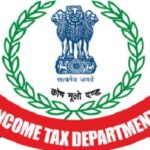Introduction:
As the complexities of income tax regulations continue to evolve, so do the mechanisms for ensuring accuracy and transparency in tax assessments. A recent development in this realm is the provision under sub-section (20) of section 155, which empowers taxpayers to rectify errors related to the credit of tax deducted at source in the return of income filed under section 139. This provision serves as a crucial tool for assessees seeking to amend their assessment orders in light of tax deductions made in subsequent financial years.
Understanding the Provisions:
According to the stipulations outlined in this provision, where income has been included in the return of income filed by an assessee under section 139 for a specific assessment year (referred to as the relevant assessment year), and the tax on such income has been deducted at source and paid to the Central Government in accordance with Chapter XVII-B in a subsequent financial year, the Assessing Officer can amend the assessment order or any intimation allowing credit for such tax.
The timeline for making such an application is within two years from the end of the financial year in which the tax was deducted at source. The application process involves submitting Form No. 71, which is prescribed for this purpose.
Application Procedure and Form No. 71:
- Form No. 71 Requirements: The application, as mandated by sub-section (20) of section 155, is to be made using Form No. 71. This form serves as a comprehensive tool for providing necessary details to the tax authorities.
- Submission to Tax Authorities: Form No. 71 must be submitted to the Principal Director General of Income-tax (Systems) or the Director General of Income-tax (Systems) or any authorized person designated by them.
- Electronic Submission: To ensure efficiency and accuracy, the form must be furnished electronically. Assessees can choose between two modes:
- Under digital signature, if the return of income requires digital signature.
- Through electronic verification code in cases not covered under the digital signature requirement.
- Responsibilities of Tax Authorities: The Principal Director General of Income-tax (Systems) or the Director General of Income-tax (Systems) is entrusted with specifying the procedures for furnishing Form No. 71. Additionally, they are responsible for formulating and evolving appropriate security, archival, and retrieval policies for the forms submitted.
- Forwarding to Assessing Officer: Once Form No. 71 is received, the tax authorities, or any person authorized by them, shall forward the form to the Assessing Officer for further processing.
Conclusion:
The introduction of Form No. 71 and the corresponding provisions in sub-section (20) of section 155 mark a significant step towards enhancing the efficiency and accuracy of tax assessments. This mechanism empowers assessees to rectify errors related to the credit of tax deducted at source, ensuring that assessments reflect the most accurate financial picture. The emphasis on electronic submission, digital signatures, and stringent security measures aligns with the broader trend of leveraging technology for a more streamlined and transparent tax administration.
As taxpayers celebrate the first year since the inception of these provisions, it is a testament to the continuous efforts to modernize and simplify the income tax system. As we move forward, staying abreast of such developments is crucial for both taxpayers and tax professionals, ensuring compliance and facilitating a smoother tax-filing experience.







